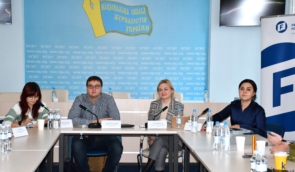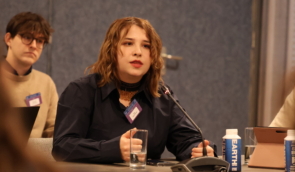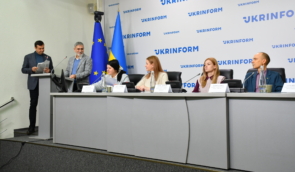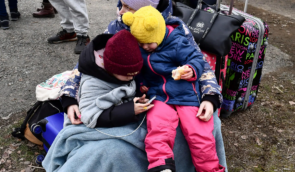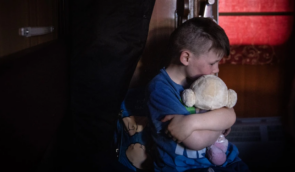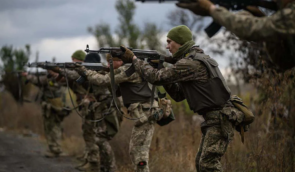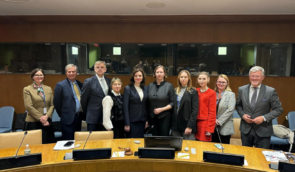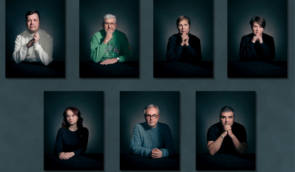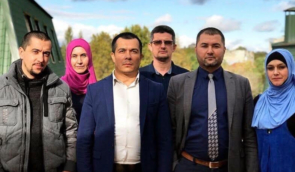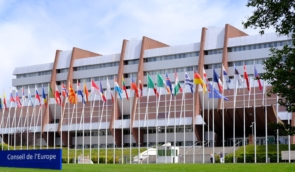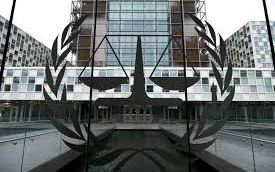Russian citizenship takes root not only in the passports of deported Ukrainian children, but also in their minds – Onysiia Syniuk
On June 5, the National Museum of the Holodomor-Genocide held a public dialogue “Abduction of Children as a Component of the Genocide of Ukrainians”. One of the components of this genocidal policy of the occupiers is the abduction of Ukrainian children, the destruction of children’s self-identification as Ukrainians, forced passportisation, militarisation of children, etc.
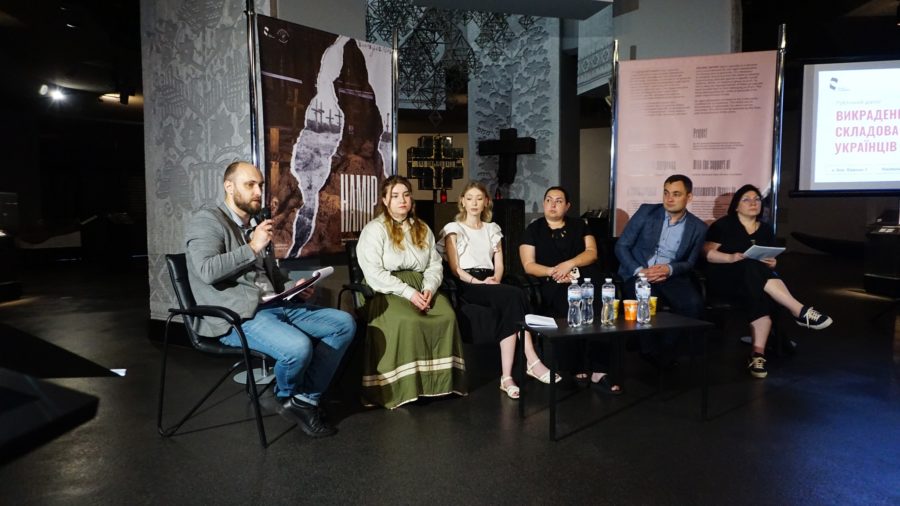 Photo: National Museum of the Holodomor-Genocide
Photo: National Museum of the Holodomor-GenocideThe discussion was attended by Daria Herasymchuk, Advisor – Presidential Commissioner for Children’s Rights and Child Rehabilitation, Kateryna Rashevska, a lawyer at the Regional Center for Human Rights, Onysiia Syniuk, a legal analyst at Human Rights Centre ZMINA, Nani Hohokhiia, a PhD candidate in history at Luhansk Taras Shevchenko National University, and Mykhailo Kostiv, a PhD in history and the head of the Department of Genocide, Crimes against Humanity and War Crimes Research at the Holodomor Museum.
Onysiia Syniuk, a legal analyst at ZMINA, noted that all Russian crimes against Ukrainian children, such as deportations, Russification of education, etc. are interconnected, as they are all part of the same genocidal policy. That is, a whole set of steps is being taken towards a single goal – to change the national identity of Ukrainian children under temporary occupation, Syniuk said.
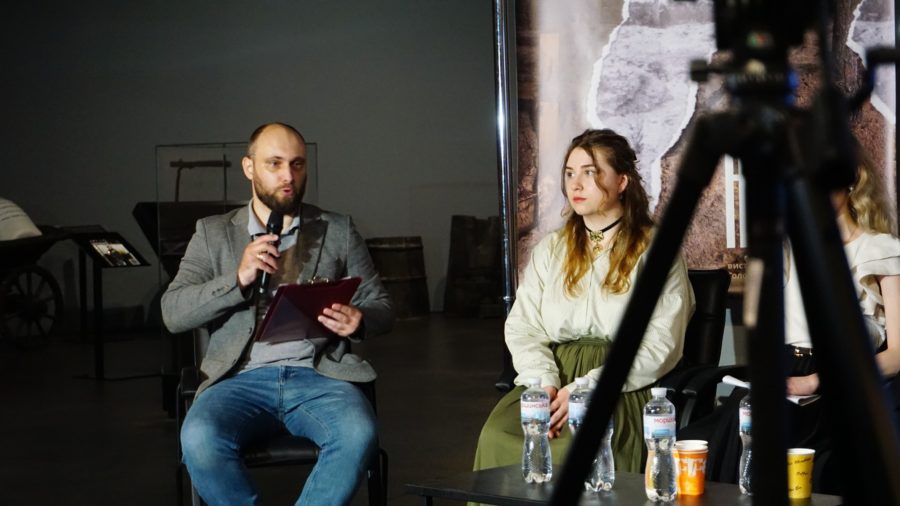 Photo: National Museum of the Holodomor-Genocide
Photo: National Museum of the Holodomor-Genocide“The war and occupation began in 2014, and all these processes started at the same time. The first thing that was done after the occupation of Crimea was to bring the entire territory under the legal regime of the Russian Federation and impose Russian citizenship on the peninsula’s residents. Automatically, all residents who were registered in Crimea were recognised as Russian citizens without any exceptions. The only thing they were allowed to do was to apply for Russian citizenship, but even here there were a number of restrictions to prevent people from doing so”, the expert says.
Speaking about the so-called entities in the occupied territories of Donetsk and Luhansk regions, Onysiia Syniuk notes that a different system works in those territories, because initially the Russian Federation decided to imitate its “absence” in these territories.
At that time, people were encouraged to obtain a Russian passport as much as possible, and after the full-scale invasion, the procedure became simple: a person submits an application and receives a Russian passport in five days, the human rights defender comments.
As for Ukrainian children under occupation, the analyst adds that the Russian Federation has made changes to its citizenship legislation that specifically concern Ukrainian children.
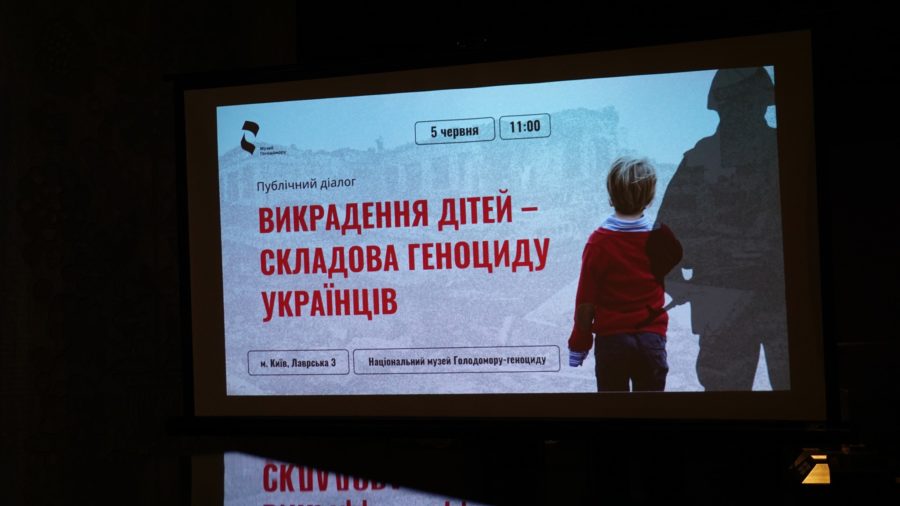 Photo: National Museum of the Holodomor-Genocide
Photo: National Museum of the Holodomor-Genocide“In particular, it was about the fact that not only parents could apply for Russian citizenship, but also guardians, trustees, heads and representatives of administrations and institutions where these children are staying both in the occupied territory and in Russia”, says Syniuk.
She adds that the factor of connections is important when transferring children to Russian families:
“First, Russia places these children under the care of Russian families, and then their guardians apply for Russian citizenship. At first, they deport Ukrainian children to Russia or even replace the management of the relevant institutions in the occupied territory, and then this management turns Ukrainian children into Russian citizens”, the legal analyst says.
Moreover, Syniuk adds that according to Russian citizenship law, a child acquires Russian citizenship by birth if both parents or even one parent has Russian citizenship and if the child was born on the territory of the Russian Federation.
But according to the expert, Russian citizenship takes root not only in the document, but also in the minds of these children.
You can find the video of the discussion here.
If you have found a spelling error, please, notify us by selecting that text and pressing Ctrl+Enter.

